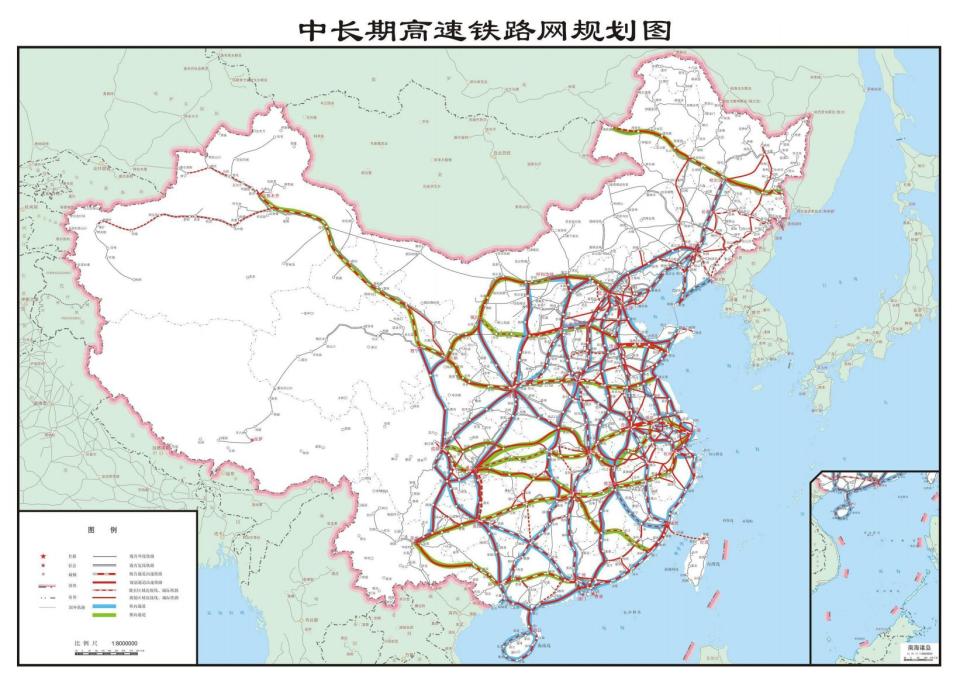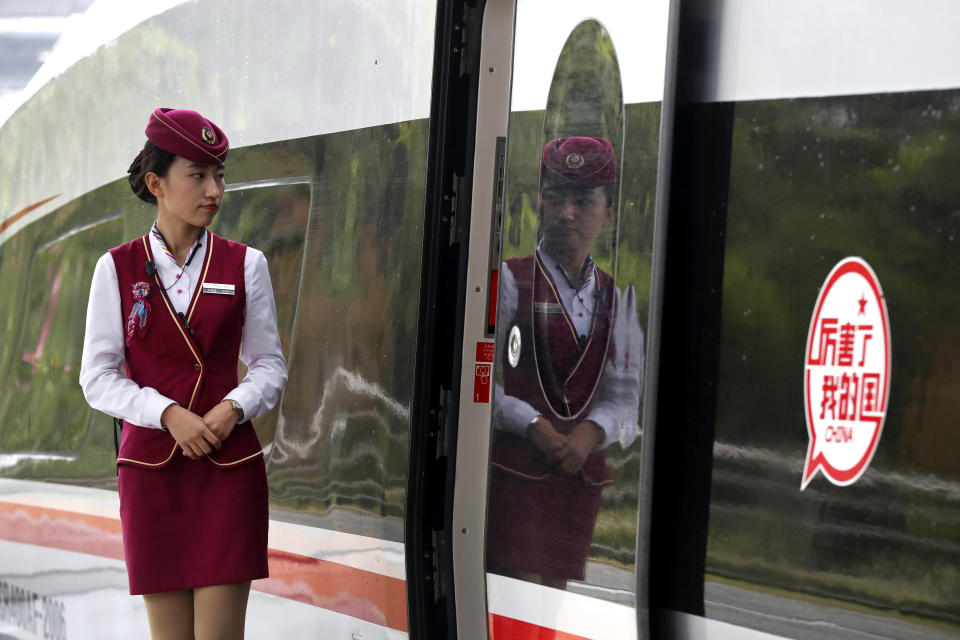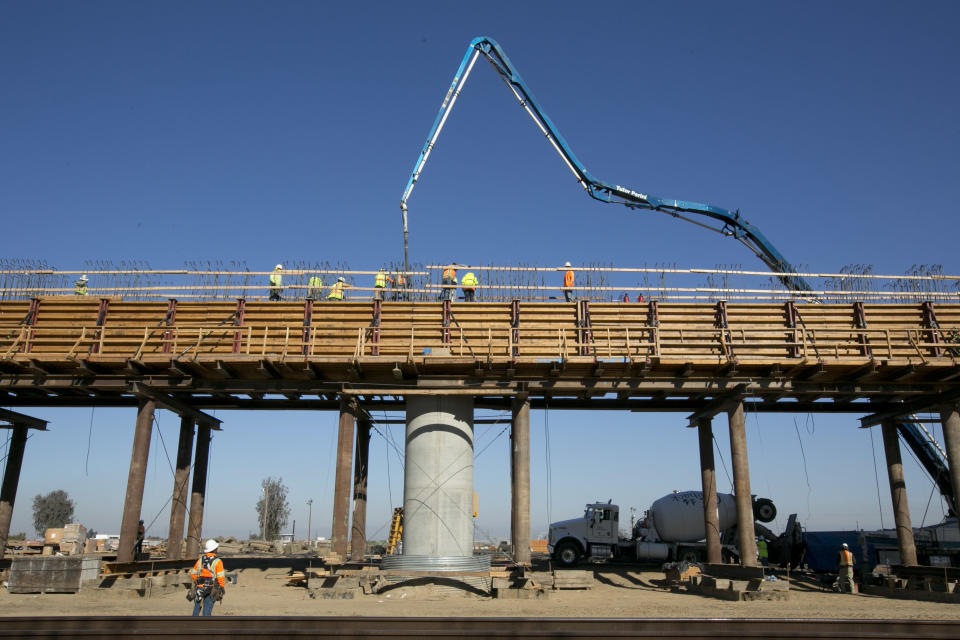China builds the world’s longest high-speed rail as a rail stalls in the U.S.
As President Donald Trump feuds with California Governor Gavin Newsom over funding for the state's long-planned high-speed train, China has been further expanding its high-speed rail — the world’s longest.
The U.S. and China announced ambitious plans to fund high-speed rail projects backed by government stimulus packages during the financial crisis in 2008. Since then, the length of high-speed rail lines in China has expanded to 18,000 miles, accounting for more than two-thirds of the world's total. That’s five times more than what Japan has built since the 1960s.
How about the U.S.? As we know, high-speed rails haven’t changed the way people travel in America as President Barack Obama once envisioned. States selected for rail project funds, including Wisconsin, Ohio and Florida, turned down the federal money as they saw little benefit to embark on such a project.

There is one state that seems to be pulling it off. With a population of 40 million and a $2.5 trillion economy, California was considered a promising state to have America’s first real high-speed rail with an average speed of more than 160 miles per hour. With the support of former Governor Jerry Brown, California started to build its first high-speed rail in 2015.
But Governor Newsom’s announcement to scale back the project amid ballooning costs crushed some people’s hope. The Trump administration is not happy and is "exploring all available legal options" to recover $2.5 billion in federal grants that were given to the project, leaving the previously proposed finished date of 2033 unlikely.
High-speed rails come at a cost

With higher population density and lower car ownership per person, it’s no wonder that Beijing shows more enthusiasm when it comes to building a high-speed rail. To some in China, it also illustrates the institutional advantage China has over the U.S.
“The political and institutional system allow China to gather national resources to accomplish large undertakings,” said Jia Limin, a professor at Beijing Jiaotong University who heads China?s high-speed rail innovation program. Under a one-party system, the Chinese government backs rail projects by investing in technology innovation and infrastructure, which could also boost GDP growth. China has also grown from a builder of high-speed rail technology to an exporter of such technology to countries like Russia and Mexico.
China spends more on infrastructure annually than North America and Western Europe combined. In 2008, China announced a RMB 4 trillion ($586 billion) stimulus package in an attempt to minimize the impact of the financial meltdown. Funded by both central and provincial governments, more than one-third of the package was dedicated to infrastructure, including railways, roads and airports.
While the nationwide high-speed rail network has helped reduce poverty by increasing access to services and economic opportunities, the big spending has caused a surge in debt, particularly among local governments and state-owned enterprises. Since the beginning of 2008, China’s gross debt has ballooned from about $6 trillion to nearly $34 trillion in 2018, or from 171% to about 300% of GDP. That number dwarfs the already alarming debt level of $22 trillion in the U.S.

China says rails are worth taking on debt
The unsustainable level of debt-GDP ratio has raised concerns about China’s economy. The government has spent several years deleveraging, a task that has become even more challenging as the local economy experiences the slowest growth since 1990.
Zhao Jian, an urban study scholar in Beijing warns China Railway Corporation, the state-owned enterprise that undertakes railway passenger and cargo transportation services, has 5.25 trillion yuan ($770 billion) in debt, which could be a “gray rhino” in the country’s economy.
But China’s ambition of building high-speed rails shows no sign of slowing down. With another 6,000 miles under construction, China aims to cover 80% of metro areas with high-speed rails by 2020. People’s Daily, the party’s mouthpiece, has pledged to keep investing and growing rail networks in China. “While the one-time investment in the railway project is extremely high and the recovery cycle is long, the huge spillover effect of the railway is also an indisputable fact,” an article published on Wednesday said.
The U.S. hasn’t stopped its plans for a high-speed rail, either. The latest call comes from the Green Deal introduced by Congresswoman Alexandria Ocasio-Cortez (D-NY) and Senator Ed Markey (D-Mass.) in February. That initiative urges the U.S. to “build out high-speed rail at a scale where air travel stops becoming necessary.”
Do you think the U.S. should build a high-speed rail network? Share your thoughts with Krystal Hu via [email protected]
Note: The previous version stated the wrong dollar amount of debt China has taken for its rail project.
Read more:
What Tim Cook left out about China in Apple's revenue guidance
